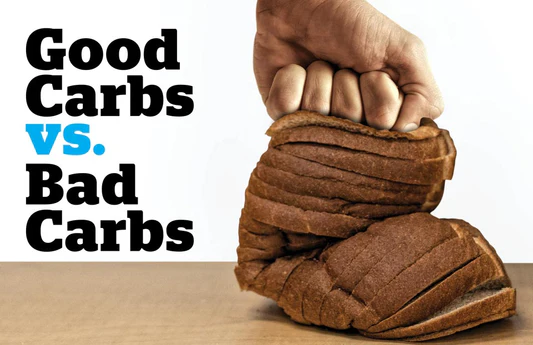The human buttocks. A topic that can be discussed in casual talk while often overlooking the exact importance of the region. It’s no secret that the butt tends to grab all the attention on social media and can be a focal point of attraction, but looks aside, how about its function?
This topic of conversation is going to discuss the importance of the largest muscle group in the human body and its role in not only daily function but also athletic performance. So, let’s dive in, BUTT first, a little background….
Humans Have The Largest Gluteus Maximus & Gluteus Medius Muscles
Human beings are the only mammals that function primarily as bipedal. We are the only mammals with the largest gluteus maximus and gluteal muscle groups. This is for the primary function of operating on one foot and having the ability to run.
Take a close look at how four-legged mammals run. They push off their hind legs in the same motion which help give them amazing acceleration. Big cats such as lions may be able to run faster than we can, but they cannot sustain these high running speeds for long. Wolves migrate hundreds of miles, but they are not running the entire time.
Humans are meant for speed and endurance so primitively we were built to be able to tire out and hunt down our prey by outrunning them. Since we do not hunt our food on foot anymore, we tend to lose sight of this important function. Some people may hunt but I don’t think they are running after a bison with a spear. The closest we get to performance measures like that these days is athletics.
Which way do you think you can jump higher? Off of two feet or one? If you watch basketball, take notice of how players go to dunk or receive a layup. Watch how a track and field athlete executes the high jump. It’s off one foot. The long jump is for distance, not height, which is why it can be executed with two feet. When we walk and run, our push off phase stems from single leg positions, otherwise we would hop like bunnies or kangaroos.
The Importance Of Single Leg Stability & The Glutes
Single leg stability is extremely important for human function and that is where the gluteal muscle group comes into play. Everything we do in society, unfortunately, works against our primitive function and biomechanical makeup. Sitting with our hips at 90 degrees in office chairs, sitting sloped down in car seats, sitting on toilets, couches and sitting on our phones all nullify the engagement of the gluteals. It also works against our posture for our back and core, which will be future topics of discussion.
So how do we expect to go from all these activities during the day to a function that requires exact demand to these muscle groups?
The answer is we must put in a little more effort towards understanding these muscle groups, how to train them and how to manage our bodies if we are expected to perform in a healthy manner for daily function and athletics.
What Muscles Make Up The Glutes?
The gluteal muscle groups consist of three big players, your gluteus maximus, medius, and minimus. Working alongside these big guys are some smaller muscles such as the tensor fascia lata, piriformis and other big component stabilizers such as the adductors, iliacus, and hamstrings. All muscle names derive from Latin and the previously mentioned all work to help to control your pelvis during movement.
What Functions Do The Gluteal Muscles Perform?
- The gluteus maximus works as the power extensor of the hip.
- The medius and minimus work to help keep the pelvis steady when you stand on one leg and prevent rotation of the leg.
- The tensor fascia lata helps to stabilize the hip joint, pelvis and knee position.
Glute Deficiencies And Common Injuries
Deficiencies in these areas commonly cause injuries that many are familiar with such as iliotibial band syndrome and patellofemoral pain syndrome. Other weird sounding syndromes can pop up like piriformis syndrome, hamstring tendinopathy, snapping hip, and SI joint dysfunction.
Muscles don’t work alone but rather in synergy with each other which is commonly referred to as motor control. Motor control is a fancy term for coordination, how well your body can complete a movement. When some of these muscles are overworked or there is an imbalance it results in some of those syndromes and diagnoses previously mentioned.
A common example can be knee pain. Research over the years has demonstrated that knee issues stem from deficient hip stability. The knee is a connector joint and when there are issues proximally or distally at the hip, pelvis or ankle, the knee basically is caught in the middle and takes the blow. Your hip and ankle are more mobile joints than your knee and allow for more degrees of movement, which allows for more areas of error.
The Glutes & Balance
Something to start thinking about is your balance. You would be amazed how many people cannot stand on one leg as well as they think. How well can you stand on one leg? How many attempts does it take for you to do it perfectly and then hold it there? Can you do it while looking around a room or holding a weight? How about with your eyes closed? How visual dependent are you or can you feel your muscles working? We don’t think about this simple function when we walk outside, while shopping, going up and down stairs, socializing and even exercising but the amount of times we hit on a single leg is a lot throughout the day. We can thank most of this function to the gluteals.
I will leave you with this. Rest will make anything feel better! The one thing I will start drilling home is that band-aiding and avoiding the issue is the most common practice amongst athletes. Pain relief is always a primary focus as we want to feel good, but it often is too focused on. If you correct the root of the problem, you won’t have pain. Pain basically tells you something is wrong with what you’re doing. Understanding these muscle groups will help to understand upcoming topics involving training, running mechanics, injury reduction and performance standards.
So, stay tuned and next time you see someone with a nice butt, remember just because something looks good doesn’t mean it performs well.
References:
- Lenhart, R., Thelen, D., Heidersheit, B. (2014) Hip Muscle Loads During Running at Various Step Rates. Journal of Orthopedic and Sports Physical Therapy, Vol 44(10), 766-773
- Hansen, J., Netter, F. (2007) Atlas of Human Anatomy 2nd Edition
About The Author
Michael St. George, PT, DPT (@icore_stgeorge on Instagram) is a physical therapist who works for Excel Physical Therapy and Fitness which is a private practice that is based around the greater Philadelphia region and suburbs. He is FMS, SFMA, Y Balance and Motor Control Test Certified with 8 years of experience in outpatient orthopedics and sports medicine. His training consists of experience working with physicians and surgeons from the Rothman Institute and therapists in his field specializing in various manual techniques and advanced treatment procedures.








